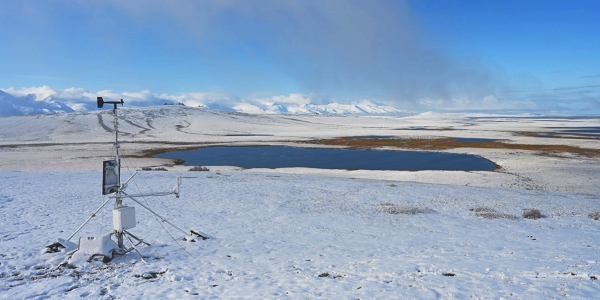Comprehensive data from several seasons of field research in the Alaskan Arctic will address uncertainties in Earth-system and climate-change models about snow cover across the region and its impacts on water and the environment.
“Snow cover and its distribution affects not only the Arctic but global energy balances, and thus how it is changing is critically important for understanding how future global climate will shift,” said Katrina Bennett, lead author of the paper in The Cryosphere. Bennett is principal investigator at Los Alamos National Laboratory for the Department of Energy’s Next Generation Ecosystem Experiment Arctic project. “Our statistical model fills in the gap in understanding the spatial distribution of snow.”
The research found that spatial distribution depends most heavily on vegetation, elevation and landscape features, such as stream banks and benches — areas of topographic variability where shrubs grow and snow accumulates.
Based on random-forest machine learning, the statistical model characterizes the spatial pattern of the end-of-winter snow distribution and identifies the key factors controlling the spatial distribution. The model also predicts the snow distribution for the local study sites and can be generalized across the region.
Read more at DOE/Los Alamos National Laboratory
Image: Statistical models based on several seasons of field research on the distribution of snow in Alaska are leading to a deeper understanding of changing hydrology, topography and vegetation dynamics in the Arctic and sub-Arctic. (Credit: Los Alamos National Laboratory)


